
Fast, affordable Internet access for all.

We published our first profile of the largest cable and telecom providers in 2018, where we detailed the lack of real choices most Americans had when it came to high-quality, reliable broadband. At the time, we found that for the largest Internet Service Providers (ISPs) investment was correlated to competition rather than the regulatory environment. Monopoly ISPs expanded their Fiber-to-the-Home networks only in areas where they faced competition, and rural Americans were left behind as a result.
Our 2020 report, Profiles of Monopoly: Big Cable and Telecom finds that these key points remain true, and the report includes a host of new maps to show it. From the report:
Read the 2020 report Profiles of Monopoly: Big Cable and Telecom [pdf].
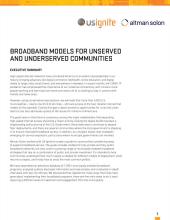
"Broadband Models for Unserved and Underserved Communities," [pdf] a white paper from US Ignite and Altman Solon, explores the various models that cities can employ to connect their residents and businesses.
The paper covers five approaches that communities can take to improve Internet access, from full private broadband to full municipal broadband with varying types of public-private partnerships in between. Of all the well-connected American cities (where 50% of residents have access to 250 Megabits per second broadband speeds), the paper finds that 8% are served a form of municipal network.
To help local government officials figure out which model is right for their community, US Ignite and Altman Solon include a number of helpful charts, decision trees, and other considerations.
Regardless of the exact broadband model, cities can play an important role in connecting underserved communities. The paper ends:
Although the digital divide that remains in our country is unlikely to be fully closed soon, municipalities can still be powerful agents of change. We hope this study will pass along the hard-won lessons of prior programs and aid municipalities considering broadband expansion to better serve their residents. The faster we work together to bridge the digital divide, the sooner we all benefit from the technologies of the future.
Download "Broadband Models for Unserved and Underserved Communities" at the link or below.
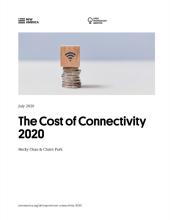
The Cost of Connectivity 2020, a recent report from the Open Technology Institute (OTI) at New America, explores how much Americans pay for Internet access compared to those in other parts of the world.
After examining 760 broadband plans in 28 countries in North America, Europe, and Asia, the report's authors conclude that Americans pay higher fees for slower speeds, with communities of color and low-income households most affected. The report points to a lack of Internet service provider transparency and competition as reasons why costs are higher in the United States compared to other places. OTI found that municipal broadband networks, like the one in Ammon, Idaho, provide much better value to subscribers and offer some of the most affordable Internet plans in the country.
Some takeaways from The Cost of Connectivity 2020:
- "[I]nternet service in the United States remains unaffordable for, and therefore inaccessible to, many low-income households . . . In April 2020, 43 percent of lower-income parents reported that their children will likely have to do homework on their cellphones, and 40 percent said that their children would likely have to use public Wi-Fi to finish schoolwork because they lack a reliable internet connection at home. The 'homework gap' also disproportionately affects students who belong to BIPOC communities."
"Just three U.S. cities rank in the top half of cities when sorted by average monthly costs. The most affordable U.S. city—Ammon, Idaho — ranks seventh."
"Data caps further increase the cost of internet service while limiting users’ data consumption . . . Furthermore, data caps can have anticompetitive effects on the wider ecosystem, especially if an Internet Service Provider (ISP) selectively applies data caps to preference its own content while deprioritizing competitors . . . Notably, most of the plans with data caps are in the United States. In Europe, all plans advertised no caps or did not specify. In Asia, only one city specified a cap."
The Institute for Local Self-Reliance, of which the Community Broadband Networks initiative is a part, recently released a report, guide, and toolkit all in one. Fighting Monopoly Power: How States and Cities Can Beat Back Corporate Control and Build Thriving Communities brings together the work of all the Institute's initiatives, which advocate for more local control and less consolidation of corporate power.
Here’s the driving impulse:
Concentration has reached extreme levels. Most industries are dominated by a handful of corporations. As we detail in this report, concentrated economic power has reconfigured multiple sectors in ways that have both weakened the broader U.S. economy, by stifling investment and innovation, and harmed working people and communities. This centralization of power in private hands is threatening Americans’ fundamental right to liberty and equality.
Too often policymakers try to alleviate symptoms. This guide calls for dealing with the root problem. Concentration didn’t happen by accident; it’s not the result of inevitable forces. As each section of this guide details, it’s a product of deliberate policy choices. While some of the changes needed are federal, especially antitrust and financial reform, states and cities have potent tools and, as we show, some are using them. During the last Gilded Age, local leaders were the first to take action against monopoly power. This is a guide to the policies that state and local policymakers should enact to rekindle that fight against corporate concentration.
The guide covers lots of ground, offering both analysis and policy solutions for the set of problems plaguing banking, electricity, food and farming, pharmacies, small businesses, state attorneys general, waste, and, of course, broadband.
In fact, broadband constitutes one of the most crucial components of this larger picture. In July 2018 we showed that the impacts of monopoly telecom and cable providers for Americans across the country include high prices, slower speeds, unreliable connections, a refusal to invest in network upgrades, and a dearth of options in rural areas as huge ISPs sought profits in urban markets. Look for an update to this report later this year.
For years, federal and state governments have spent billions of dollars on efforts to build broadband networks in underserved rural communities while doing very little to bring home Internet access to unconnected Americans living in our nation’s cities.
A new white paper, released recently by the National Digital Inclusion Alliance (NDIA), outlines how this policy decision has a racist impact — benefiting mainly white, non-Hispanic people while disadvantaging many Black Americans and people of color in urban areas, where the majority of unconnected households are. “This policy is counterproductive, it’s another form of structural racism, and it needs to change now,” Angela Siefer, Executive Director of NDIA, shared in a statement.
To reach their conclusions, the paper’s authors analyzed federal data to find the relative percentage of people by race without home broadband access in both urban and rural communities. Summarizing their analysis, they wrote:
- In the rural counties which are most likely to qualify for federal broadband funding, people living in households with no broadband — the intended beneficiaries of the government’s ostensible efforts to “close the digital divide” — are mostly “white alone” and non-Hispanic.
- In contrast, the majority of people living in households with no broadband in the nation’s largest cities and least rural counties — the places least likely to qualify for broadband infrastructure funding or any other federal digital inclusion assistance — are non-white, multiracial and/or Hispanic or Latino.
"Structurally Racist" and "Counterproductive" Policy
NDIA’s analysis found that white, non-Hispanic rural residents are the most likely recipients of federal and state funding to expand broadband in unserved and underserved rural communities. They report that more than three quarters of those who lack broadband access in the most rural counties and more than 60% of the unconnected households in counties with low broadband coverage are white and do not identify as Hispanic or Latinx.
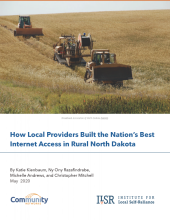
Contrary to the common narrative of poor connectivity and dim prospects for rural America, the vast majority of rural North Dakotans have gigabit fiber Internet access available to them today.
Our case study, How Local Providers Built the Nation’s Best Internet Access in Rural North Dakota, explains how this came to be, highlighting how 15 telephone cooperatives and local companies came together to invest in their rural communities and build fiber broadband networks across the state. In the 1990s, those companies united to purchase 68 rural telephone exchanges in North Dakota from regional provider US West (now CenturyLink). Then, they leveraged federal broadband funds to deploy some of the most extensive fiber networks in the country, turning North Dakota into the rural broadband oasis that it is today.
Download the case study, How Local Providers Built the Nation’s Best Internet Access in Rural North Dakota [pdf].
A Model for Better Rural Connectivity
The case study explores North Dakota's exceptional rural connectivity through several maps and graphs and offers the following takeaways:
Read How Local Providers Built the Nation’s Best Internet Access in Rural North Dakota [pdf].
The fourth edition of our report, Cooperatives Fiberize Rural America: A Trusted Model for the Internet Age, reveals the steady growth of cooperative fiber since we originally released the report in 2017. In the report, we present rural telephone and electric cooperatives as a proven model to connect rural communities across the country with high-quality Internet access. This version updates the maps and analysis in the report with the most recent federal data.
Download the May 2020 update of Cooperatives Fiberize Rural America: A Trusted Model for the Internet Age [pdf].
We first published this report in 2017 and have updated it in the years since. For all versions, including the most current, visit the Reports Archive.
Highlights from the fourth edition of Cooperatives Fiberize Rural America include:
Read the updated version of Cooperatives Fiberize Rural America: A Trusted Model for the Internet Age [pdf].
BroadbandNow.com — a company that mostly focuses on crunching different data sets to provide information on where broadband is available — has released its second report on municipal broadband barriers.
Their first one had some basic factual failings, and we were concerned that it would mislead people. The new report has corrected some of those errors, but it makes new ones that again lead us to caution against making decisions based on claims within it.
To be clear, we believe — after careful consultation with others that have long worked in this space — that the proper number of states to be considered preempting municipal broadband is 19.
Errors and Mischaracterizations
Again, we want to reiterate that we value BroadbandNow's contribution to information about where broadband is available based on crunching different databases. That is something they seem to have done better than most that have tried. However, their efforts to analyze the law and reality around barriers to municipal networks have too many simple errors that we find frustrating.
The single most egregious error is removing Arkansas from the list of states with barriers. Arkansas has taken limited steps to lessen preemption, but it continues to have more restrictions on municipal broadband than many of the states listed as more significant in the report.
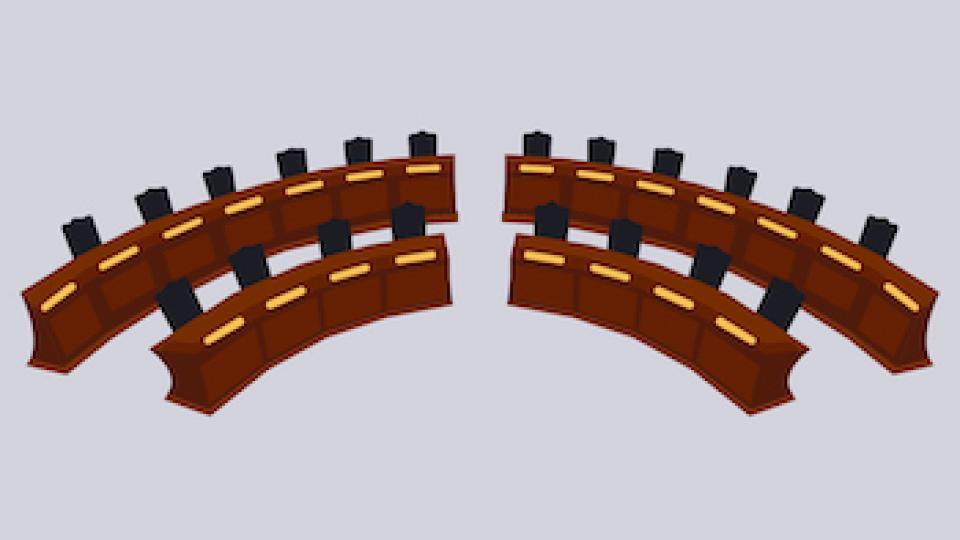
A recent case study from the Community Broadband Networks initiative at the Institute for Local Self-Reliance (ILSR) finds that rural North Dakotans are more likely to have access to fiber connectivity and gigabit-speed Internet than those living in urban areas. This may surprise many of us city dwellers, who are often stuck with large monopoly providers and their expensive, unreliable Internet access.
The case study, How Local Providers Built the Nation’s Best Internet Access in Rural North Dakota, highlights the efforts of 15 local companies and telephone cooperatives who came together to invest in rural North Dakota and build gigabit fiber networks across the state. Their success is traced back to the companies' acquisition of 68 rural telephone exchanges from monpoloy provider US West (now CenturyLink) in the 1990s. The local providers then leveraged federal funds to connect rural residents and businesses with some of the most extensive and future-proof fiber networks in the country.
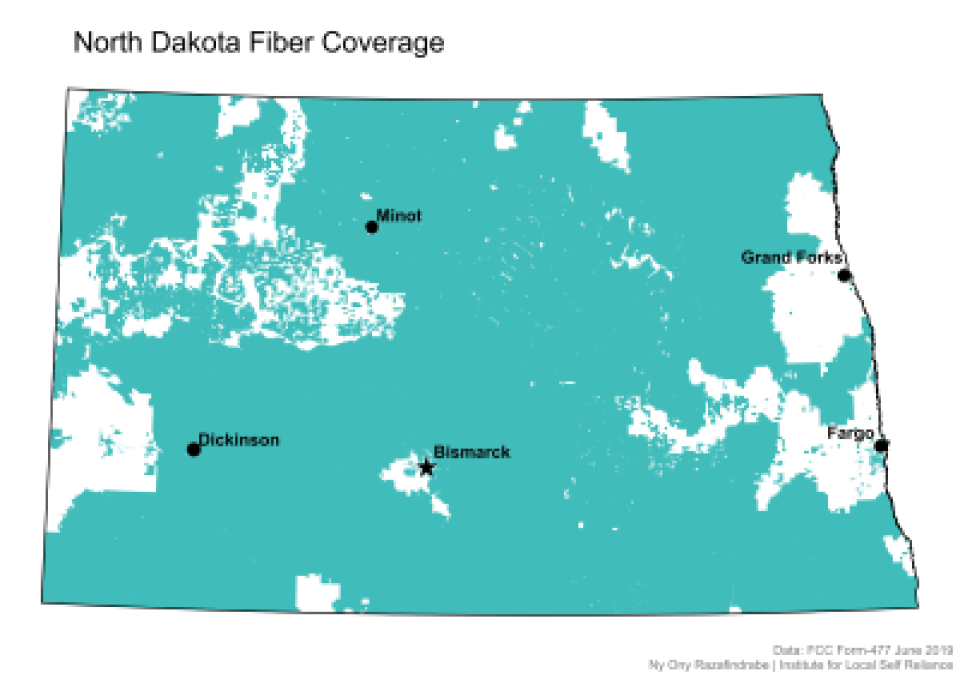
Download the case study, How Local Providers Built the Nation’s Best Internet Access in Rural North Dakota [pdf].
The case study features several maps and graphs that demonstrate North Dakota's widespread, high-quality connectivity, including this map of fiber coverage in the state.
Some key lessons from the case study:
In September 2019, we interviewed Kathryn DeWit from the Broadband Initiative at the Pew Charitable Trusts about their State Broadband Policy Explorer. The tool documents state laws aimed at expanding broadband access. Now, the group has released a reported titled, How States Are Expanding Broadband Access, that examines developments in nine states where broadband availability has improved after implementing state efforts. The report dives into what those states are doing that works and makes recommendations to emulate those policies and repeat that positive trajectory.
All Hands on Deck
One of the primary discoveries from the report is that states are using many technologies and funding approaches to bring high-quality Internet access to those who have been left behind. Like other projects that involved multiple stakeholders and public funding, Pew learned that building broadband support and requiring accountability are factors that contribute to success.
Pew examined efforts in California, Colorado, Maine, North Carolina, Tennessee, Virginia, West Virginia, and Wisconsin. They also looked at Minnesota, where the Border to Border Development Grant Broadband Program provides funding for projects in areas where connectivity is slow and unreliable or where people have no service options at all. In Minnesota, notes the report, the state has established measurable and increasing speed goals and allows funding to flow to a broad range of recipients, including local governments, rural cooperatives, tribal governments, and large corporate Internet access providers.